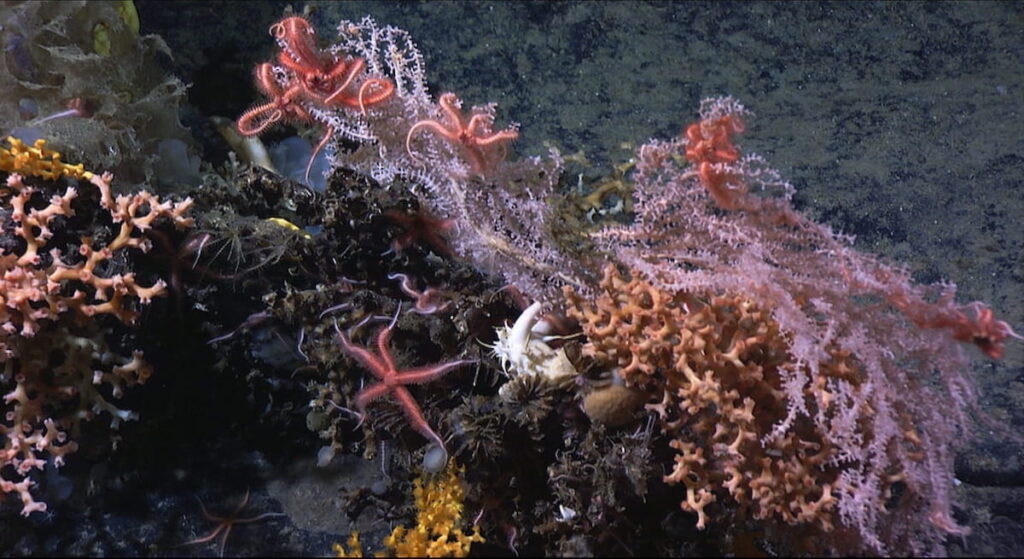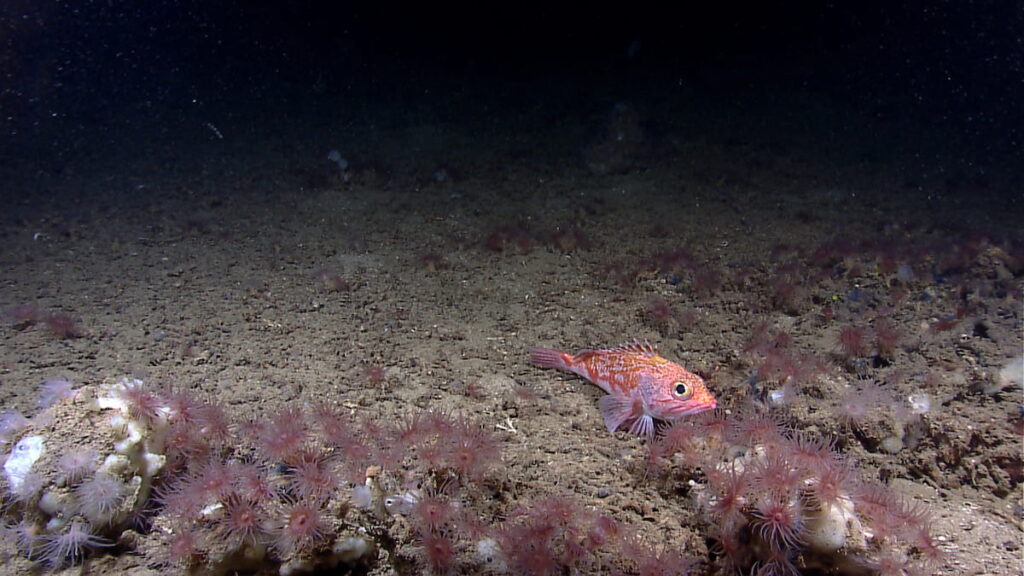The deep sea continues to reveal new secrets, reminding us of its wonder and its vulnerability to emerging threats such as seabed mining.
Take the recent revelations about “dark oxygen.” The conventional thinking until recently has been that oxygen can be made only in the presence of sunlight. That is, plants convert sunlight and water during photosynthesis into the oxygen that marine life and people breathe. However, scientists recently discovered a mind-blowing phenomenon: The deep sea makes oxygen in the absence of sunlight.
Researchers couldn’t believe their findings, so much so that they initially wrote them off, pointing to flawed instrumentation. However, sure enough, the data showed a consistent increase in “dark oxygen” measured at the bottom of the ocean in fields of polymetallic nodules. These are the same potato-size masses coveted by the mining industry for critical minerals used in everything from cell phones to electric car batteries. The nodules, which form over millions of years, are the result of metals such as iron and manganese precipitating out of the water and accreting on a hard object, like a fish bone.
Never miss an update
Enter your email and never miss an update
again or contact 1.888.780.6763
var form = document.getElementById(’email-signup-66fc588660823′);
form.querySelector(‘.rsform__field–email’).addEventListener(“nb:result”, e => {
var nbStatus = form.querySelector(“[name=”nb_email_status”]”);
var nbDate = form.querySelector(“[name=”nb_validation_date”]”);
var currentDate = new Date();
nbStatus.value = e.detail.result.response.result;
nbDate.value = currentDate.toISOString().split(‘T’)[0];
grecaptcha.enterprise.ready(async () => {
var tokenField = document.querySelector(“#email-signup-66fc588660823 [name=”token”]”);
var token = await grecaptcha.enterprise.execute(‘6Lcmr3shAAAAAAVRlvJrsUufEEQuItzNDlkpmB2g’, {action: ‘verify’});
tokenField.value = token;
});
});
<!– –>
The research team ruled out other processes that might explain the uptick in oxygen, including microbes.
The researchers hypothesize the dark oxygen is likely the result of electrolysis, the process by which electrical currents split water into hydrogen and oxygen. So, where is the electricity needed to perform this chemical reaction? It is the voltage detected in the nodules themselves. The nodules could act as natural batteries when clustered together in numbers that generate enough juice to split the water molecule into the elements of hydrogen and oxygen.
This is a significant finding because it raises important questions about the role of dark oxygen in the deep ocean where oxygen is naturally scarce. Most marine species, just like people, need oxygen to survive, absorbing oxygen through gills and other apparatuses. Dark oxygen could make all the difference to species in an environment where oxygen is not only naturally limiting but expected to decrease because of climate change. As oceans warm, they lose their ability to absorb and hold oxygen, as the water warms up and stratifies at the surface.
Deep-sea mining could further upend the deep-sea ecosystem by removing the nodules, preventing the production of oxygen that could be key to the survival of animals living there. In addition, we already know that mining will likely create plumes of sediment that would eventually resettle, potentially smothering nodules and interfering with their ability to produce oxygen.

if(typeof window.oc_media_credits === ‘undefined’) {
window.oc_media_credits = {};
}
window.oc_media_credits[76236] = “Mountains in the Sea 2004. NOAA Office of Ocean Exploration; Dr. Les Watling, Chief Scientist, University of Maine”;
But these and other impacts of deep-sea mining would not be limited to the seafloor. In another recent study, scientists demonstrated that the unwanted tailings from seabed mining activities could expose organisms that live in the water column to harmful contaminants. In a laboratory experiment, they studied the types and amounts of trace metals in the mining wastewater, finding that the levels of cobalt and copper would be 15 times higher than background levels.
Copper is among the most toxic substances known to aquatic organisms. Research suggests that as ocean temperatures and acidification levels increase, this will magnify the toxicity of copper to marine life. What’s more, copper accumulates in fish and other marine species, including species of seafood we eat, posing a potential threat to people who eat fish with elevated copper levels.
Researchers say these copper-laced plumes could be especially problematic for mesopelagic communities (organisms inhabiting intermediate ocean depths) at depths between 200 and 1,000 meters. Why is this significant? Mesopelagic species are critical to ocean carbon sequestration and climate regulation; trillions of hungry animals migrate to the surface each night to feed, and in the process of returning to the deep ocean during daytime they transfer between 2-6 gigatons of carbon annually into the deep ocean.
Mesopelagic species also provide an important food source for marine mammals, seabirds and fishes, including seafood species that support important commercial fisheries worldwide. According to Food and Agriculture Organization dataanalyzed by Ocean Conservancy, an estimated 24 billion pounds of commercially significant fishery species such as tunas, salmon swordfish and squids that eat mesopelagic prey were landed in 2022. Deep-sea mining could potentially pull the rug out from under this incredibly important ecosystem.

if(typeof window.oc_media_credits === ‘undefined’) {
window.oc_media_credits = {};
}
window.oc_media_credits[76231] = “NOAA Okeanos Explorer Program, Gulf of Mexico 2012 Expedition”;
Seabed mining could expose these mesopelagic species to toxic tailings, potentially jeopardizing key functions ranging from climate regulation and sustaining ocean food webs to supporting pelagic (open sea) fisheries and putting protein on the table for millions of people.
The more we learn about the deep sea, its unique adaptations and the many services it provides to the ocean and humanity alike, the more the threat of seabed mining comes into clearer focus. Ocean Conservancy supports a moratorium on deep-sea mining and is working with the ocean conservation community and the government to stop this practice before it starts. Recently, Ocean Conservancy signed a letter to President Biden calling for a moratorium, or precautionary pause, on deep seabed mining, domestically and internationally. Additionally we have worked with Members of Congress to oppose deep sea mining. You can take action with us to stop seabed mining.
We can and must grow clean energy to meet climate goals, but this cannot be at the cost of our oceans and local communities. By investing in new battery technology, alternatives to deep sea minerals and circularity in mineral supply chains here at home, the United States can scale its renewable energy sector while reducing its dependence on foreign supplies of critical minerals. This is in the best interest of economic and national security and the long-term health of our oceans and planet.
The post Three New Deep-Sea Discoveries appeared first on Ocean Conservancy.

